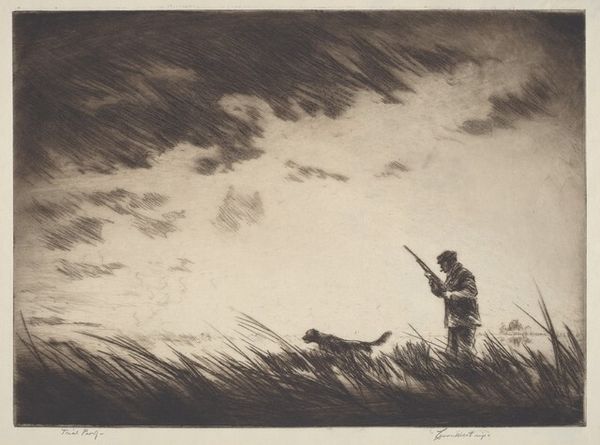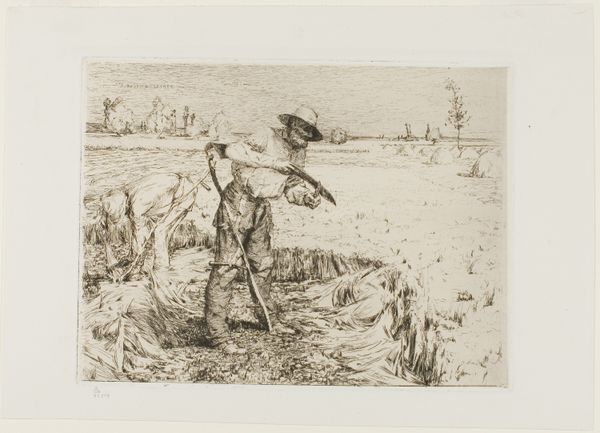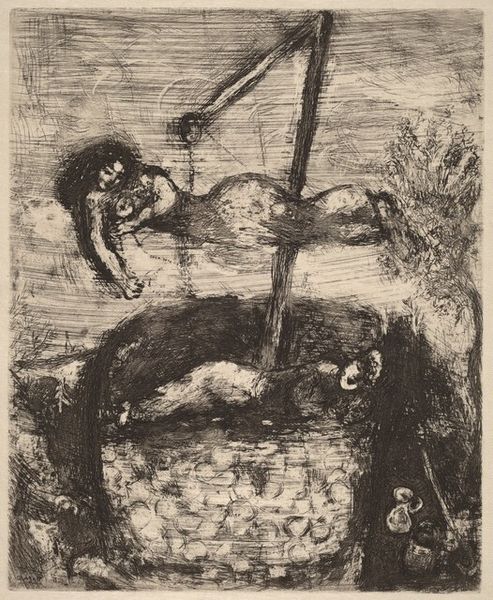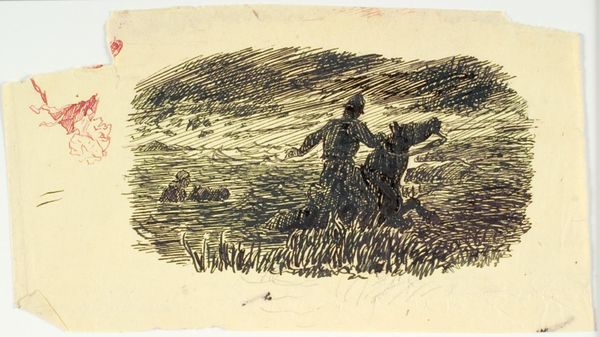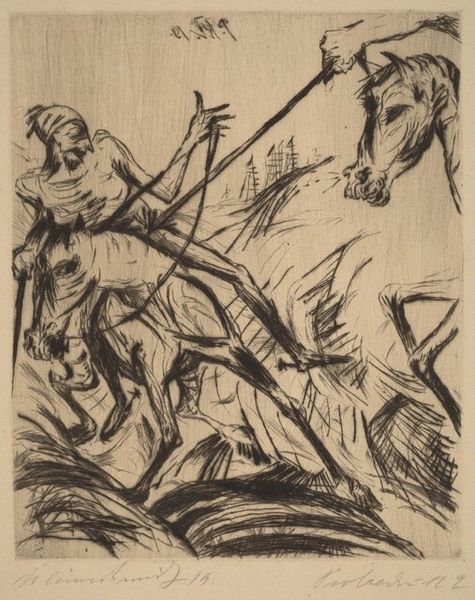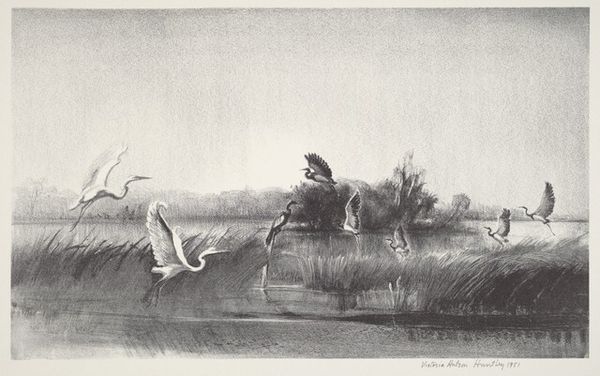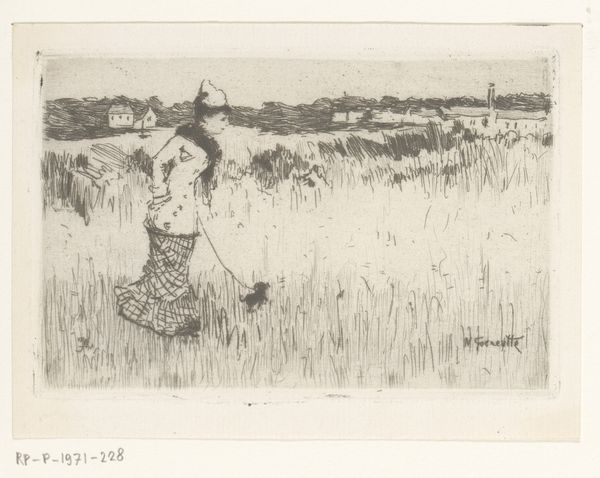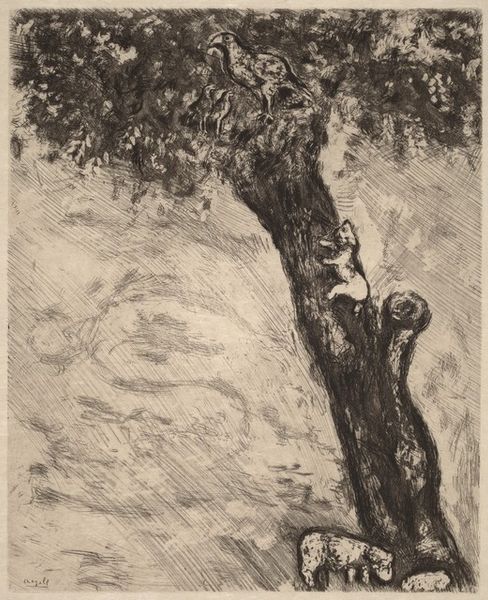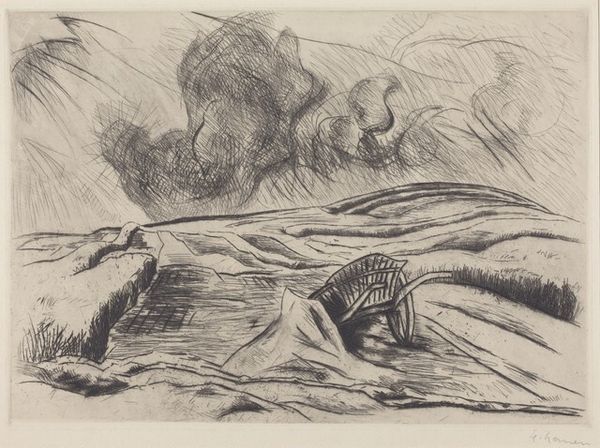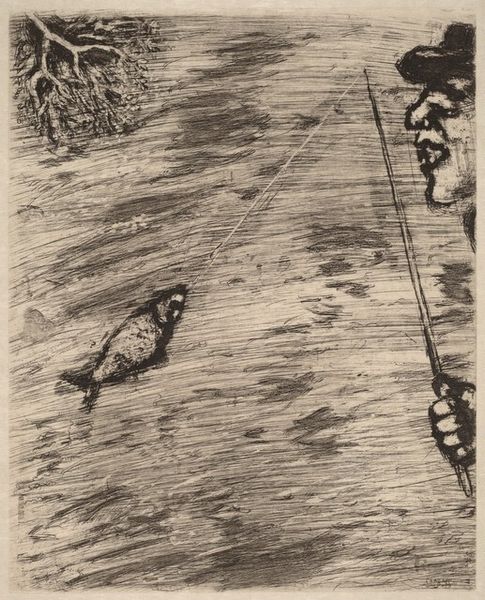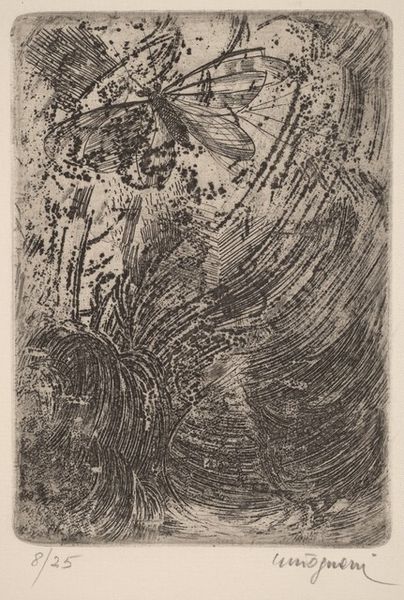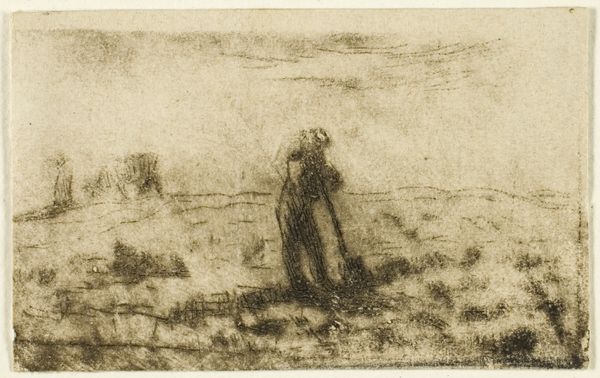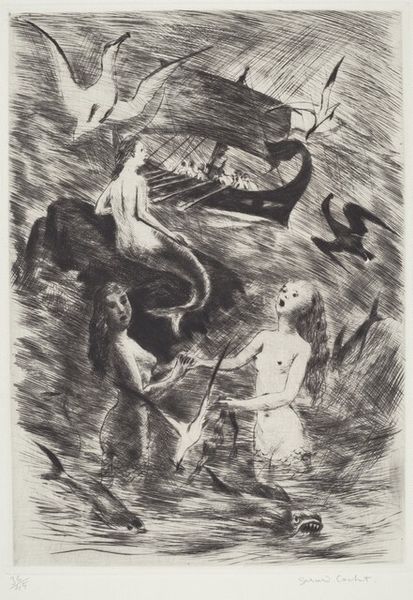
The Lark and Her Little Ones with the Owner of a Field 1927 - 1930
0:00
0:00
Copyright: National Gallery of Art: CC0 1.0
Editor: This etching by Marc Chagall, made between 1927 and 1930, is called "The Lark and Her Little Ones with the Owner of a Field." The composition feels very dreamlike. What's your interpretation of the work? Curator: This print, from Chagall's series of etchings illustrating La Fontaine's Fables, opens up discussions about power, labour, and the natural world. The farmer figure with his scythe and the vulnerable lark family become stand-ins for broader socio-political anxieties present in interwar Europe. Does the imagery of the "owner" figure holding a scythe feel foreboding to you? Editor: Definitely. The scythe feels very symbolic of the period. Are you suggesting that Chagall is using the fable to explore themes related to exploitation? Curator: Precisely! Consider the historical context: post-revolution anxieties, the rise of totalitarian regimes. Chagall may be inviting us to consider the uneven power dynamics inherent in systems that allow one individual to "own" the means of production, and how that ownership affects the most vulnerable. How does that resonate with current societal structures? Editor: It makes me think about corporate agriculture, and environmental justice. The vulnerability of the larks and the power of the farmer can certainly still be applied to those scenarios. Curator: Exactly. These fables act as lenses, encouraging us to critically examine historical narratives and social relations of today. How do you see this work inspiring activism? Editor: By illustrating that these power structures have long and deep roots, the artwork helps us recognize where these oppressive structures exist. Curator: It's through this historical contextualization, this interdisciplinary lens, that art can become a powerful catalyst for change.
Comments
No comments
Be the first to comment and join the conversation on the ultimate creative platform.
